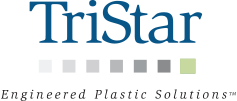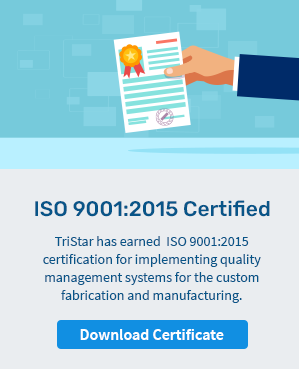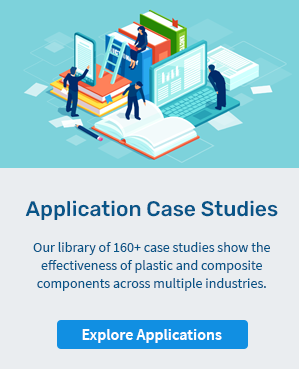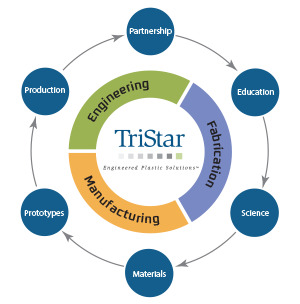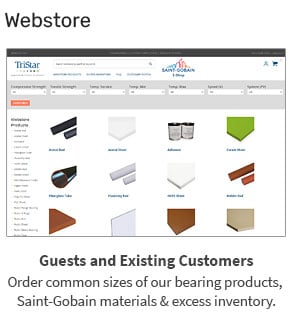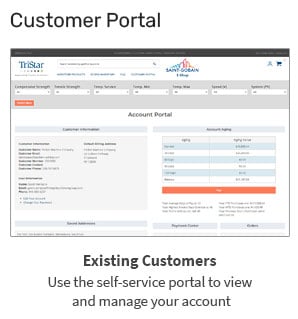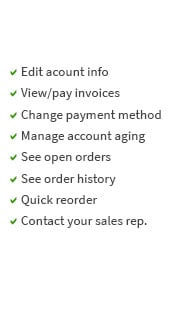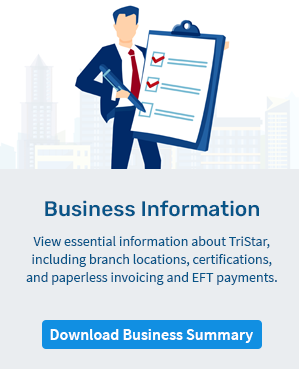Self-Lubricating Bearings: Essentials for Selection & Design
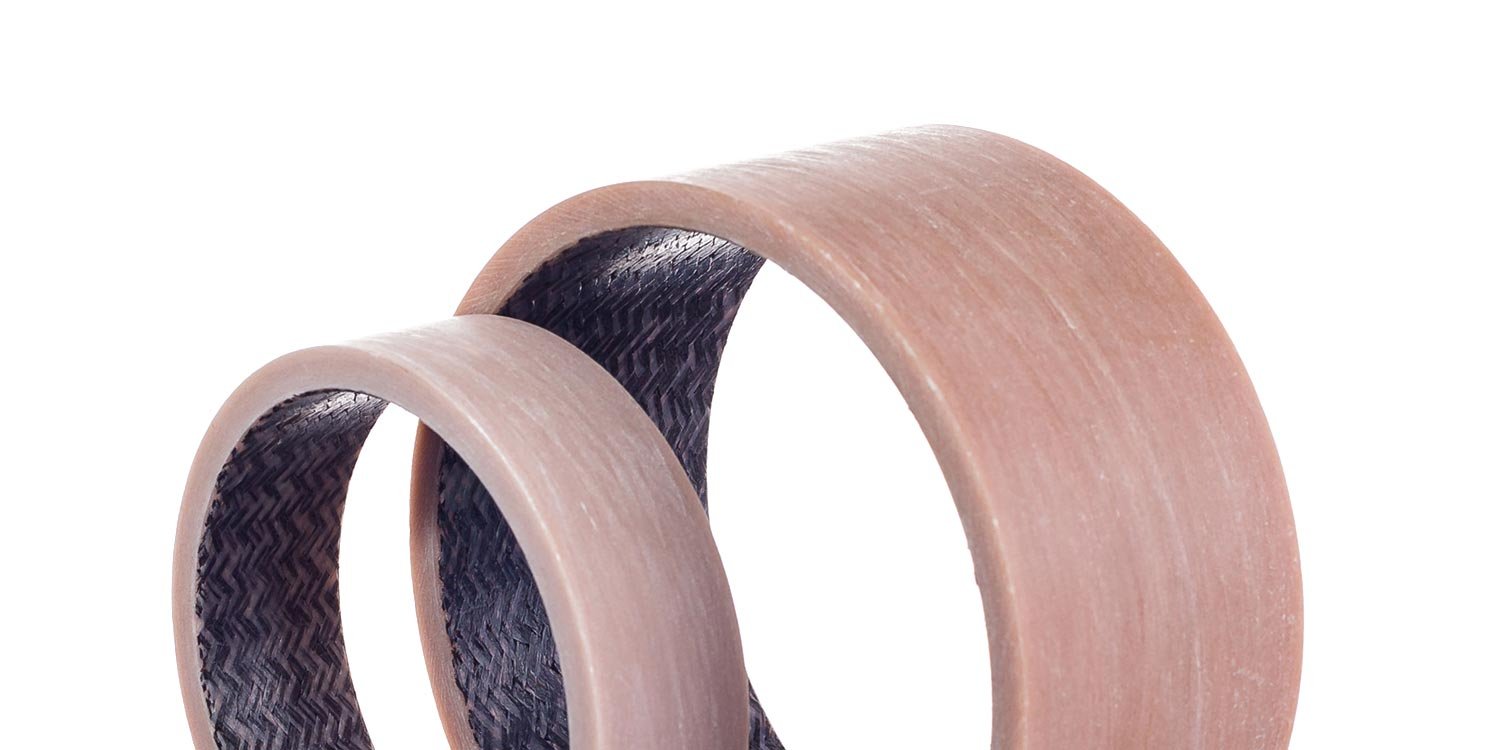
Table of Contents
Self-lubricating bearings, also called oil-free polymer bushings, dry-running bearings, or greaseless bearings, deliver clean, maintenance-free motion where uptime, hygiene, and access matter most. By removing routine re-greasing, they reduce unplanned stops, cut contamination risk, and simplify design.
As a self-lubricating bearings manufacturer specializing in polymers and composites, TriStar Plastics has created this guide to focus on mechanisms, material families, selection, and installation. We also discuss how external greases trigger failures (and how to avoid them).
At Tristar Plastics, we offer one of the widest selections of self-lubricating bearing products in the industry—from PTFE-based Rulon® bearings to Ultracomp® filament-wound composites.
What Is a Self-Lubricating Bearing?
Most self-lubricating bearings carry their own lubricant reserve, either dispersed throughout a polymer/composite, stored in a porous metal matrix, or provided by a thin, low-friction liner.
As external lubrication is not integral to the function of these self-lubricating components, there are no zerk fittings, grease schedules, or messy relube intervals to manage. In practice, this reduces human-factor errors (over/under greasing), avoids lubricant migration, and supports consistency in regulated environments.
It’s important to understand that “self-lubricating” does not mean “zero maintenance.” material selection, PV, shaft finish, alignment, and environmental conditions are all factors that can (and do) limit bearing life.
How Self-Lubrication Works (Polymer, Composite, Metal)
 Most polymers and composites disperse solid lubricants (e.g., PTFE, graphite, MoS₂) throughout the base matrix—the primary plastic or resin—which shear during sliding to create a microscopic transfer film on the shaft. This “third-body” layer self-renews in service and is associated with lower, more stable friction. The transfer film builds up with successive passes until the mating surface (counterface) is substantially covered; PTFE-filled composites often produce a more robust film than unfilled PTFE, improving wear resistance and friction stability.
Most polymers and composites disperse solid lubricants (e.g., PTFE, graphite, MoS₂) throughout the base matrix—the primary plastic or resin—which shear during sliding to create a microscopic transfer film on the shaft. This “third-body” layer self-renews in service and is associated with lower, more stable friction. The transfer film builds up with successive passes until the mating surface (counterface) is substantially covered; PTFE-filled composites often produce a more robust film than unfilled PTFE, improving wear resistance and friction stability.
Sintered metals (e.g., oil-impregnated bronze) store oil in interconnected pores. Load and temperature bring oil to the interface; at rest, capillary action returns oil to the pores, sustaining a boundary film without external greasing.
Metal-polymer liners bond a thin self-lubricating polymer layer (e.g., acetal, PTFE, PEEK) to a metal shell, combining a low-friction surface with the strength, tolerance control, and press-fit behavior of metals. Useful where thin walls, rigid housings, or tight tolerances are required.
Self-Lubricating Bearing Advantages & Limitations
 Compared to traditional greased bronze bushings, Tristar’s self-lubricating bearings provide superior performance in high-load and dirty environments.
Compared to traditional greased bronze bushings, Tristar’s self-lubricating bearings provide superior performance in high-load and dirty environments.
Expect fewer stops for lubrication, cleaner operation, and lower total cost of ownership, especially in washdown, abrasive, or hard-to-reach locations.
Polymers/composites resist corrosion and often tolerate contamination better than greased metal solutions because there is no sticky external grease to trap debris.
Trade-offs: internal lubricant is finite (life depends on load/speed/temperature), PV/temperature ceilings apply, and performance is sensitive to shaft material/finish and alignment. Metal-polymer or sintered-metal solutions can be advantageous for thin-wall geometries, higher running speeds, or when a metal shell is required for assembly or heat conduction.
For more on self-lubricating bearings—and bearings in general—see our deep dive.
Types of Self-Lubricating Bearings
- Engineering polymers: PTFE-filled and other high-performance blends for sleeve/flanged bushings and thrust washers.
- Strengths: chemical resistance, corrosion immunity, quiet running, strong fit for oscillating or low-to-moderate speed/high-load service, and excellent behavior in dirty/wet environments.
- Considerations: avoid excessive speeds of over 400 feet per minute and extreme temperatures; specify shaft finishes that support film formation; allow for thermal expansion in fits.
- Filament-wound/laminated composites: CJ (PTFE-lined glass/epoxy) and Ultracomp® (polyester-fiber laminates with internal solid lubricants).
- Strengths: very high compressive load capacity, shock/misalignment tolerance, good grit tolerance; common in marine/off-highway where lubrication access is poor.
- Considerations: confirm shaft hardness/finish and housing support; plan for edge-load control.
- Metal-polymer lined bushings: a PTFE-type sliding layer on steel/bronze shell.
- Strengths: compact, rigid, predictable press-fit behavior, good heat conduction; often higher speed capability than many bulk polymers.
- Considerations: ensure counterface quality; manage start-stop conditions to protect the liner.
- Sintered metals (oil-impregnated): porous bronze/iron bushings with oil reserves in the matrix.
- Strengths: simple, well-understood behavior; reliable boundary film generated by pore-fed oil; good for small motors and general machinery.
- Considerations: rust risk vs. polymers; oil viscosity and temperature window matter; orientation and duty cycle can influence oil migration.
Polymer/Composite vs. Metal
Polymers and composites excel in corrosion resistance, contamination tolerance, and low noise. They are strong in slow/oscillating joints, washdown environments, and applications where grease migration is unacceptable (such as in sanitary food/pharma applications).
Metal-polymer liners offer thin-wall packaging, higher dimensional stability, and often higher speed capability.
Sintered metals provide simple, predictable oil delivery but can be sensitive to rust and require attention to oil viscosity and temperature windows.
| Family | Load Capacity | Speed Range | PV Limit (Rel.*) | Temp (Rel. *) | Chemical & Corrosion | Dirt/Grit Tolerance | Noise/Vibration | Typical Uses |
|---|---|---|---|---|---|---|---|---|
| Engineering Polymer | High (low-speed) | Low–Med | High | Med | Excellent / Excellent | Excellent | Very Low | F&B, pharma, automation, general OEM |
| Filament-Wound Composite | Very High | Low–Med | Very High | Med | Very Good / Excellent | Excellent | Low | Off-highway, marine, heavy equipment |
| Metal-Polymer Liner | High | Med–High | High | Med–High | Very Good / Good | Good | Low–Med | Rugged duty, thin-wall, tight tolerances |
| Sintered Metal (Oil-Impreg.) | Med | Med–High | Med | Med | Good / Fair (rust-prone) | Fair | Med | Small motors, general machinery |
| *Relative = qualitative; Blend/grade dependent. | ||||||||
Selection & Sizing (Engineer’s Checklist, with Formulas and a Worked Example)
 This section highlights the core engineering checks for selecting a self-lubricating bearing. Use it as a quick screen—PV and motion mode first—then validate environment, shaft/housing details, fit, and break-in to lock in long, stable bearing life.
This section highlights the core engineering checks for selecting a self-lubricating bearing. Use it as a quick screen—PV and motion mode first—then validate environment, shaft/housing details, fit, and break-in to lock in long, stable bearing life.
- Load, speed, PV: PV represents the maximum dynamic loading condition of the application which is used as an initial filter to determine which family of materials presents the optimal chance of success. For example, PV of a radial bearing would be:
- P (Pressure, psi/MPa) is the load (W) divided by the projected area (Internal Diameter x Length)
- V (Velocity, feet per minute) is the radial speed calculated by pi x Internal Diameter (in) x rotations per minute / 12.
- V (Velocity, meters per second) is calculated by pi x Internal Diameter (mm) x rotations per minute / 60,000
It is imperative that units remain consistent and the end value would be either PSI x FPM or MPa x m/s. Operating above a materials PV value can result in increased wear and a shortening of the product’s life span.
- Motion mode: oscillating vs. continuous rotation vs. linear. Transfer films often seed quickly under oscillation and short strokes; for linear, confirm stroke length and reversal frequency to maintain film continuity.
- Temperature & chemistry: define ambient and hot-spot temperatures; note cleaners/solvents (CIP, caustics, acids, salt spray). Choose families/liners that meet your chemical/washdown profile.
- Shaft & housing: specify compatible shaft alloys and surface finishes that support film formation (mirror finishes can hinder film seeding; very rough surfaces tear films). Select housing material/geometry for support.
- Fit & installation: for polymers/composites, allow for thermal expansion and use appropriate interference fits; add generous lead-ins/chamfers; avoid knife edges. Verify wall thickness and press-tool alignment to prevent ovality. Excess clearance in metal bearings often causes noise, vibration, and scoring; polymer bearings are more forgiving, typically damping shaft vibration and running with larger clearances by design.
- Break-in & validation: plan a brief run-in to establish the transfer film; then validate friction/temperature under expected load and duty cycle.
Example (imperial): A 1.00 in ID × 1.00 in L bushing carries 600 lbf at 60 rpm. P = 600 / (1.00 × 1.00) = 600 psi. V = π × 1.00 × 60 / 12 ≈ 15.7 ft/min. PV ≈ 600 × 15.7 ≈ 9,424 psi·ft/min.
Perform your own PV calculations using our interactive calculator.
If the candidate material’s allowable PV for your duty profile is comfortably higher, proceed to check temperature, shaft finish, and fit before prototyping.
Design and Installation Best Practices
- Shaft finish and hardness: aim for finishes that “seed” and support a stable transfer film; excessively polished surfaces can delay film formation, while overly rough surfaces tear films and raise wear. We typically recommend an 8-16 RMS finish.
- Press-fit and clearance (polymers/composites): allow for higher thermal expansion than metals; confirm interference vs. wall thickness and housing material; add generous lead-ins/chamfers and avoid sharp edges. Use aligned, smooth tooling to prevent out-of-round after press.
- Alignment and edge loading: misalignment concentrates load at edges, disrupting transfer films and inducing early wear. Use proper housing geometry, shoulder relief, and fixtures to maintain coaxiality.
- Break-in and validation: allow a brief run-in at operating temperature to establish the transfer film; then verify friction/temperature vs. expected duty. For linear systems, ensure stroke and reversal patterns maintain film continuity across the travel.
Self-Lubrication Benefits by Application & Industry
- Food & Beverage: no grease migration into product zones (hygiene); compatible with frequent sanitization, addressing FSMA compliance.
- Design tips: eliminate open grease points; verify chemical compatibility; use shafts that resist corrosion and maintain finish under Clean-in-Place (CIP).
- Marine / Outdoor: corrosion and grit resistance on cranes, winches, and exposed linkages. Better performance in underwater and salt-spray applications.
- Design tips: seal against direct spray as needed; choose materials that maintain film in intermittent duty and under shock.
- Manufacturing / Automation: clean, quiet motion in sliders and pivot joints; fewer stoppages to re-grease.
- Design tips: confirm PV at speed, account for short-stroke film behavior, and consider noise targets.
- Medical / Pharma: low noise and cleanliness; select FDA-compliant materials liners if needed (e.g., Rulon 641/1439, TriSteel).
- Design tips: eliminate grease reservoirs; validate friction stability after repeated sterilization cycles if applicable.
- Heavy Equipment / Defense: shock/impact resilience, consistent friction, and robustness to contamination; strong fit for oscillation (e.g., suspension/steering joints), where lifespan and reliability matter most.
- Design tips: protect edges from impact; spec shaft hardness to resist brinelling and abrasive wear.
Bearing Failure & External-Lubricant Pitfalls
 Over-greasing is a common failure-driver: excess grease churns, generates heat, elevates torque, and can blow seals; once seals deform or rupture, contaminants enter, accelerating wear.
Over-greasing is a common failure-driver: excess grease churns, generates heat, elevates torque, and can blow seals; once seals deform or rupture, contaminants enter, accelerating wear.
Other lubricant-related issues include oil separation (bleed) at temperature, “channeling” (starved zones), and hardened soap residues. In dusty processes (e.g., peanut handling), grease becomes a debris magnet: dust packs the clearance, friction rises, and motion can seize.
Self-lubricating solutions remove these human- and environment-driven variables. There’s no relubrication schedule to miss and no sticky grease to collect debris—while still requiring correct PV, shaft finish, alignment, and temperature control.
TriStar Solutions & When to Use Them
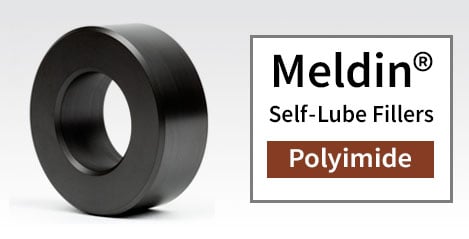
- Rulon®: PTFE-based dry-running wear materials with excellent chemical resistance. Use where low friction, corrosion immunity, and clean operation matter in wet/chemical environments; Rulon LR and plane bearings suit general-duty pivots and wear pads. Rulon 641 and 1439 for FDA compliance.
- CJ® Composite: self-lubricating composite bushings for high-load, abrasive duty and oscillation. Excellent in dirty/wet environments as a bronze replacement. Low friction, corrosion-proof, and shock-capable; ideal for presses, cylinder pivots, and heavy-equipment hinges. Available as sleeve, flanged, and thrust styles.
- Ultracomp®: filament-wound composites for high load/shock, wet/abrasive service, and misalignment tolerance. Strong in marine/off-highway where lubrication access is poor.
- Meldin®: advanced polymers for high-temperature, high-PV dry service near conventional polymer limits.
- TriSteel®: metal-backed, polymer-lined bearings for thin walls, rigid housings, or FDA-grade liners; good when tight mounting tolerances and compact packaging are priorities.
Self-Lubricating Bearing Case Studies
Here are some real-world success stories, spanning multiple industries and self-lubricating bearing materials, from our extensive application library.
 FCJ bearings boost frozen food production: Packaging/palletizing robots were freezing in sub-zero conditions. FCJ composite bushings removed relube points, ran clean at low temperatures, and stabilized uptime in a washdown environment.
FCJ bearings boost frozen food production: Packaging/palletizing robots were freezing in sub-zero conditions. FCJ composite bushings removed relube points, ran clean at low temperatures, and stabilized uptime in a washdown environment.
- Product: CJ/FCJ
- Industry: Food/Beverage
- Read the case study
 Marine bearings—ABS certified and recognized: Ultracomp® composites replaced metal in marine cranes to combat corrosion and salt-spray exposure. ABS-certified bearings delivered reliable service without grease, improving availability and housekeeping on deck.
Marine bearings—ABS certified and recognized: Ultracomp® composites replaced metal in marine cranes to combat corrosion and salt-spray exposure. ABS-certified bearings delivered reliable service without grease, improving availability and housekeeping on deck.
- Product: Ultracomp
- Industry: Marine
- Read the case study
 Pharma packaging—guide bearings for sanitation: In high-speed pharma packaging, TriSteel® guide bearings (FDA-grade liner options) reduced contamination risk by removing grease and preventing drug/equipment contact points.
Pharma packaging—guide bearings for sanitation: In high-speed pharma packaging, TriSteel® guide bearings (FDA-grade liner options) reduced contamination risk by removing grease and preventing drug/equipment contact points.
- Product: TriSteel
- Industry: Medical/Pharma
- Read the case study
 Rulon® LR in naval surface-to-air missiles: A defense system needed broad temperature capability, consistent friction, and minimal maintenance access. Rulon LR’s dry-running behavior and wear resistance fit the mission profile.
Rulon® LR in naval surface-to-air missiles: A defense system needed broad temperature capability, consistent friction, and minimal maintenance access. Rulon LR’s dry-running behavior and wear resistance fit the mission profile.
- Product: Rulon LR
- Industry: Military
- Read the case study
 Composite bearings replace bronze and improve profits: On a consumer manufacturing line, CJ composites replaced bronze bushings on press pistons and rod guides—cutting grease usage and downtime while improving profitability.
Composite bearings replace bronze and improve profits: On a consumer manufacturing line, CJ composites replaced bronze bushings on press pistons and rod guides—cutting grease usage and downtime while improving profitability.
- Product: CJ/FCJ
- Industry: Manufacturing
- Read the case study
How to Choose a Self-Lubricating Bearing Supplier

Choosing the right self-lubricating bearings manufacturer or supplier is 100% about application fit, not a logo! Look for deep materials coverage (PTFE-based polymers, filament-wound composites, metal-polymer liners, and sintered options) and the ability to compare them objectively for your duty cycle.
Expect engineering support that can convert loads/speeds into PV, interpret shaft finish/hardness, and model break-in behavior. Ask for case studies in your industry (e.g., food and bev washdown, marine, heavy equipment, pharma/medical), plus data on friction stability over time.
The best self-lubricating bearings supplier will also discuss failure modes frankly—over-greasing pathways, contamination control, and shaft finish pitfalls—and provide tooling/installation guidance to avoid edge loading and ovality.
TriStar Plastics engineers utilize a collaborative engineering approach, which encompasses all of the above to ensure that the right product is specified and supplied each and every time.
Frequently Asked Questions
Here are a few common questions relating to the content in this guide.
